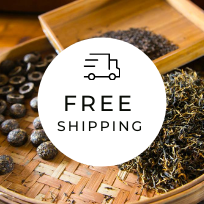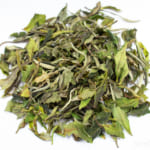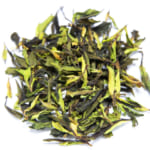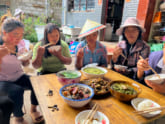- HOME >
- uncategorized
Exploring the Taste Diversity Within a Tea Tree: Apical Buds vs. Lateral Buds
- [2023.05.23] Posted By Akira Hojo

Do you believe that all tea leaves have the same taste as long as they come from the same tree? I would like to explain that the taste of tea can vary significantly depending on the plucking position, even when harvested from the same tree.
The Difference in Flavor Due to Different Harvesting Parts of the Same Tea Tree
In Japanese tea gardens, the branches are pruned to a shorter length, resembling bonsai trees, and maintained at a consistent height for machine harvesting. This makes it difficult to notice the taste differences caused by variations in the plucking position. However, in China, tea is primarily hand-plucked, which means tea trees in tea gardens do not have to be meticulously pruned like in Japan.
Especially when you visit regions known for Phoenix oolong (Fenghuang Dancong) or Pu-erh tea, you will find tea being cultivated in the form of shrubs, resembling fruit trees such as apple or persimmon trees. This cultivation style, without extensive branch pruning, is referred to as “qiaomu” in Chinese. (Please refer to the attached photo for reference.)
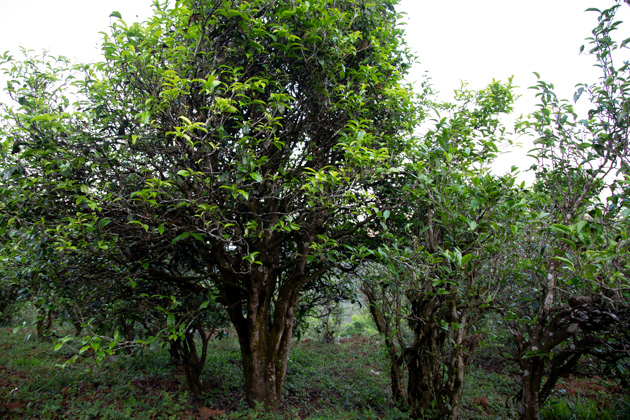
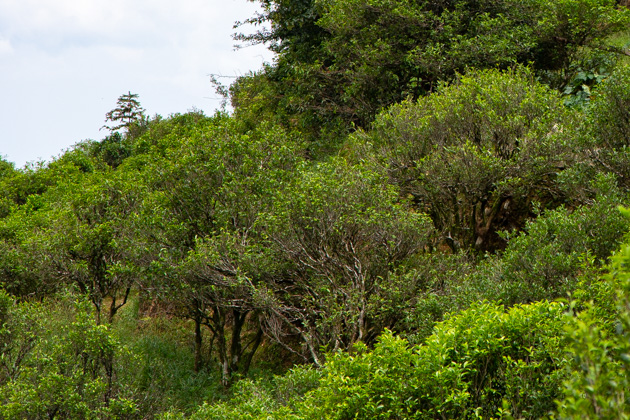
In the case of these tea trees, the taste difference based on the plucking position is highly noticeable. It’s not just slight differences that only professionals can detect; there are actually dramatic differences that anyone can notice when they are compared side by side.
The Difference in Flavor Between the Apical Bud and the Lateral Bud
In tea trees, there are two types of buds: apical buds and lateral buds. The most flavorful leaves are apical buds, which grow at the tips of the branches, while there are also lateral buds that grow on the sides of the branches.
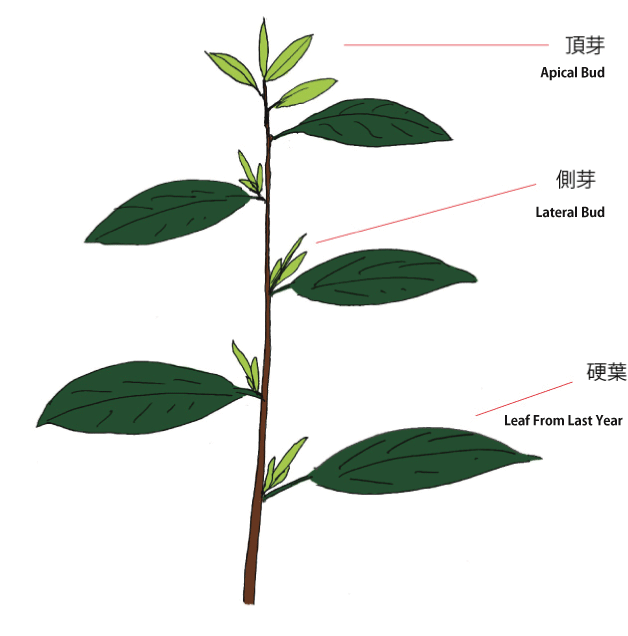
The plant buds do not grow simultaneously. There is a mechanism called apical dominance, where the apical buds have a competitive advantage and grow faster, while the lateral buds grow slowly, for the case of tea, typically with a delay of 1-2 weeks. This apical dominance is influenced by a plant hormone called auxin.
Therefore, when visiting a tea garden at the beginning of the season, you may find that the tea leaves at the tips of the branches have already grown to 1 bud with 2 or 3 leaves, while the lateral buds on the sides of the branches remain as small buds.
The apical buds at the tips of the branches have a rich and intense flavor, with pronounced sweetness and a smooth texture. They are noticeably of high quality. On the other hand, the lateral buds have a slightly milder flavor and the taste is less intense.
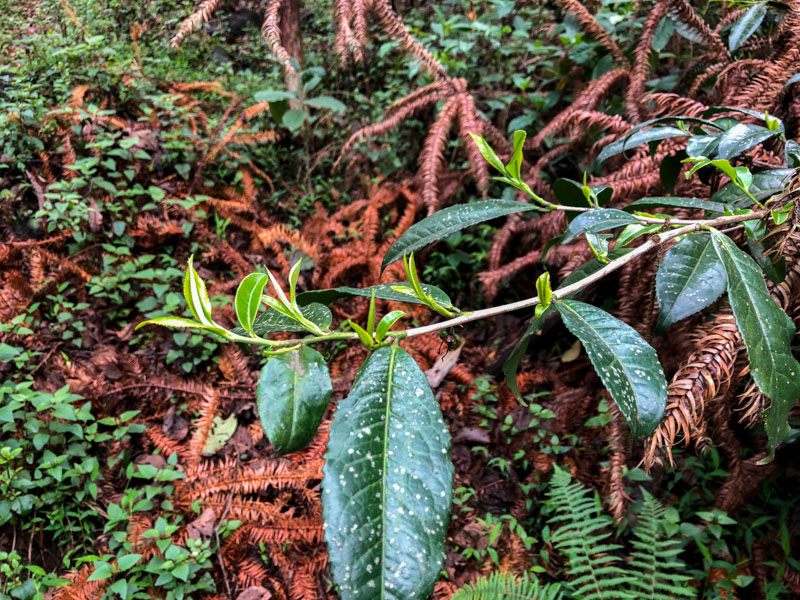
In Japanese tea gardens, cultivation methods are designed with machine harvesting in mind. For machine harvesting, it is essential for the tea buds to grow at a consistent rate. To achieve this, the branches are pruned in autumn, specifically targeting the apical buds that would otherwise grow rapidly. By pruning the apical buds, it stimulates the growth of lateral buds on the branches. This helps to synchronize the growth rate of the tea buds.
On the other hand, tea that has undergone apical bud pruning consists mainly of lateral buds. Compared to teas cultivated in the qiaomu style (where the branches are not pruned), there is a tendency for the flavor of pruned tea to be lighter.
Tea is Made from Apical Buds During the First Week
Don’t you feel like trying tea made exclusively from apical buds once you learn how exceptional their flavor is?
In fact, we source many teas (excluding Japanese teas) that consists of apical buds, particularly Yunnan tea and Phoenix Oolong. The method is actually simple: during the first week of the season, the harvested tea consists mainly of apical buds. Because of the mechanism called apical dominance, the apical buds are the ones that grow first. We have specific tea gardens from which we source our teas. Therefore, if we purchase tea harvested within the first week of the tea picking season, it will be mostly composed of apical buds, guaranteeing outstanding quality.
After the first tea picking is complete, approximately another 1 week later, tea picking takes place in the same tea garden again. By this time, the harvest of apical buds is completely finished, and instead, the grown lateral buds are plucked. By the way, these lateral buds are not considered as second flush tea. Both apical buds and lateral buds are considered as first flush tea. But it’s important to note that the quality differs between apical buds and lateral buds.
After the harvest of first flush tea (including both apical buds and lateral buds), there is a period of about one month, and then the tea starts sprouting again, which is known as second flush tea.
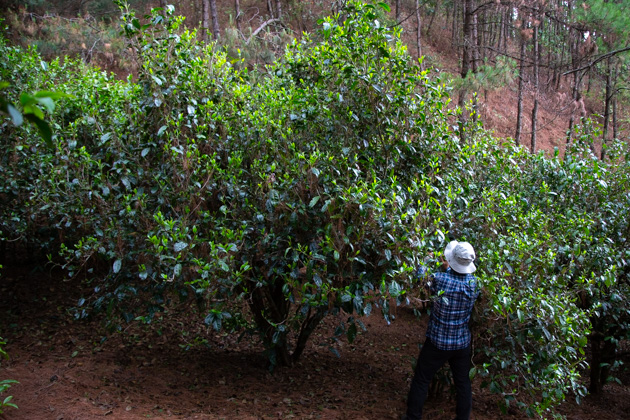
During the first week of tea harvesting, the apical buds on the tea plants are growing simultaneously.

In Yunnan Province, tea produced in the same tea garden is generally traded at similar prices regardless of whether it’s made from apical buds or lateral buds. Therefore, some producers may blend all in order to even out the quality..
On the other hand, in regions known for producing green tea and oolong tea, where the market is closer, they clearly recognize a higher value on apical buds. The initial batch composed of apical buds tends to be sold at a higher price compared to the later-picked lateral buds. This is why early-harvested Chinese green teas like Long Jing and Bi Luo Chun are typically more expensive.
Harvesting Tea Early Doesn’t Necessarily Mean Better
While it may be commonly believed that the quality of tea improves when harvested earlier, the reality is more complex.
Tea gardens situated at higher elevations experience slower tea growth. Similarly, older tea trees have a reduced growth rate, and naturally grown tea without fertilizers also exhibits slower growth. Tea meeting these conditions tends to develop slowly and only sprouts towards the end of the growing season. This gradual growth process contributes to a higher concentration of minerals, a pronounced aftertaste, and long-lasting flavors, resulting in exceptional quality. Conversely, tea cultivated in lower-elevation areas, where heavy fertilizer use and younger tea trees are prevalent, undergoes rapid growth and matures early in the spring. Consequently, when solely considering the germination period, tea gardens with later germination tend to yield better quality.
However, when comparing teas within the same garden and among similar-aged tea trees, the tea harvested within the first week of germination, comprised of apical buds, demonstrates superior quality.
When assessing teas harvested during the same timeframe, it is crucial to consider two factors: 1. the disparity in growth rate between terminal buds and lateral buds, and 2. the variability in growth rate attributed to factors such as elevation, tree age, and natural cultivation. Relying solely on the harvest date as indicated on the calendar is insufficient for determining tea quality.
Related Articles
How to get the latest update on HOJO Tea?
1. Follow Twitter, 2. Click "Like" on Facebook, and 3. Subscribe in newsletter. You can have the latest tea news from HOJO Tea.
 Subscribe the Newsletter to enjoy the privileges
Subscribe the Newsletter to enjoy the privileges- You may receive a free sample upon purchase, or you may have the priority to purchase special products. So please remember to subscribe our newsletter as well as the social network.
- Yunnan Chun Jian Green Tea from High Mountain Gardens
- Yunnan Chun Jian Green Tea is now available.This tea is made from naturally grown leaves harvested from high mountain gardens at 2100m above sea level. It has a rich, long-lasting lingering aftertaste, comparable to raw Pu-erh tea. Yunnan as a Distinctive Tea Growing Region Over the past 20 years, we have explored a wide range …
- Limited Loose Leaf Release of 2025 Da Xue Shan Wild Raw Pu-erh Tea
- We have released the 2025 loose-leaf version of Da Xue Shan Wild Raw Pu-erh Tea.This tea comes from wild tea trees that grow naturally in the high mountains of Yunnan Province, at elevations above 2000 meters. This year, we were only able to secure a small quantity for retail, and the current release is available …
NEW ARTICLES
 Yunnan Chun Jian Green Tea from High Mountain Gardens
Yunnan Chun Jian Green Tea from High Mountain Gardens- Yunnan Chun Jian Green Tea is now available.This tea is made from naturally grown leaves harvested from high mountain gardens at 2100m above sea level. It has a rich, long-lasting lingering aftertaste, comparable to raw Pu-erh tea. Yunnan as a Distinctive Tea Growing Region Over the past 20 years, we have explored a wide range …
 Limited Loose Leaf Release of 2025 Da Xue Shan Wild Raw Pu-erh Tea
Limited Loose Leaf Release of 2025 Da Xue Shan Wild Raw Pu-erh Tea- We have released the 2025 loose-leaf version of Da Xue Shan Wild Raw Pu-erh Tea.This tea comes from wild tea trees that grow naturally in the high mountains of Yunnan Province, at elevations above 2000 meters. This year, we were only able to secure a small quantity for retail, and the current release is available …
 2025 Da Xue Shan Wild White Tea Now Available from Yunnan
2025 Da Xue Shan Wild White Tea Now Available from Yunnan- The 2025 harvest of Da Xue Shan Wild White Tea is now available. Crafted from truly wild Camellia taliensis trees growing naturally in the high-altitude forests of Yunnan, this tea offers a purity and character unique to its origin. This year’s unusually dry climate during the withering season was ideal, resulting in a floral and …
 Why Do Some Teas Taste Astringent? Exploring the Causes and Mechanisms of Astringency
Why Do Some Teas Taste Astringent? Exploring the Causes and Mechanisms of Astringency- Tea can range from having no noticeable astringency to possessing a very strong one. What causes this astringency? This article explores the causes and mechanisms behind astringency in tea. Causes of Astringency Astringency arises from the binding of tea components to proteins in the oral cavity, creating a sensation of tightness or dryness. The tongue …
 The Impact of Heat Sources on Tea Flavor
The Impact of Heat Sources on Tea Flavor- It is widely recognized that the material of a kettle plays an important role in shaping the taste of water for brewing tea. Yet, an often overlooked but equally significant factor is the type of heat source used to boil the water. Different heat sources, whether gas, electric, charcoal, or wood fire, can impart distinct …
 New Release of High Mountain White Tea
New Release of High Mountain White Tea- We are pleased to introduce our High Mountain White Tea, sourced from a unique tea garden with two key features: 1. Located at an altitude of 2200-2300m2. Completely wild and untended The ideal natural conditions of this garden result in tea of exceptional quality, offering a pure and gentle, nourishing taste. High Altitude and Wild …
 New Release of Da Xue Shan Wild White Tea 2024
New Release of Da Xue Shan Wild White Tea 2024- We have released the 2024 Da Xue Shan Wild White Tea Loose Leaf. This tea was produced under our direct supervision during our stay in Yunnan Province, ensuring meticulous production management on site. Definition of Wild Tea in Yunnan Province People in Yunnan strongly associate Camellia taliensis with wild tea, regardless of where it is …
 New Release of Wild Pu-erh Jasmine Pearl
New Release of Wild Pu-erh Jasmine Pearl- Out of curiosity, we decided to create a jasmine tea based on Da Xue Shan Wild Raw Tea. This resulted in an exceptionally rare tea, not only in Japan but also in China. Custom Production Network for Jasmine Tea At our store, we source various types of base teas from different regions during the spring. …
 2024 Overview: Our Yunnan White Tea Quality, Process, and Weather Insights
2024 Overview: Our Yunnan White Tea Quality, Process, and Weather Insights- One of the teas we’ve been focusing on in Yunnan Province is white tea. Historically white tea has been produced in both Fujian Province and Yunnan Province for a long time. While white tea from Fujian Province is well-managed during processing, we are dissatisfied with the quality of the raw materials due to the use …
 Yunnan’s Hospitality Culture: Expressed Through Meals
Yunnan’s Hospitality Culture: Expressed Through Meals- In China, as a form of greeting, it’s common to say “你吃饭了吗?” which means “Have you eaten?” However, in Yunnan Province, the phrase “吃饭” is often used in various situations, more like “Eat, eat,” serving as an invitation to share a meal. Yet, with prolonged exposure to Yunnan, one comes to understand that these meal …
Shop Info

Address:Lot No. T-215, 3rd Floor, The Gardens Mall, Mid Valley City, Lingkaran Syed Putra, 59200 Kuala Lumpur
Tel: +603-2287-4537
Business Hour: 10am to 10pm
Category
- New Arrival at HOJO Online Shop
- Featured Articles
- Newsletter
- Types of Tea
- Origin of Tea
- Teapot and Tea Equipment
- Tea Column
- How to enjoy tea
- Tea Processing
- How to choose quality tea
- Tea constituents and functional effect
- Safety of Tea
- Foods
- Tea Business Operation
- Hobby and Outdoor Activity
- Ranking of Tea
- Video
- FAQ
- Media Release
Profile

- AKIRA HOJO
- I invite you to experience my tea selections.I was born in Nagano, Japan. In university, I studied agricultural chemistry, and I have the master degree in food science. I worked in Japanese food industry for 10 years. I involved in R&D, QC and QA. As a factory manager, I implemented ISO9000 series and managed the factory.
- The Art of Tea Magazine
- We posted the article on “The Art of Tea Magazine No.9, the magazine is published in Taiwan. We featured some scientific view about the tetsubin
- New Straits Times
- The Malaysian National Newspaper, New Straits Times featured HOJO Tea on 17-Oct-2007.


